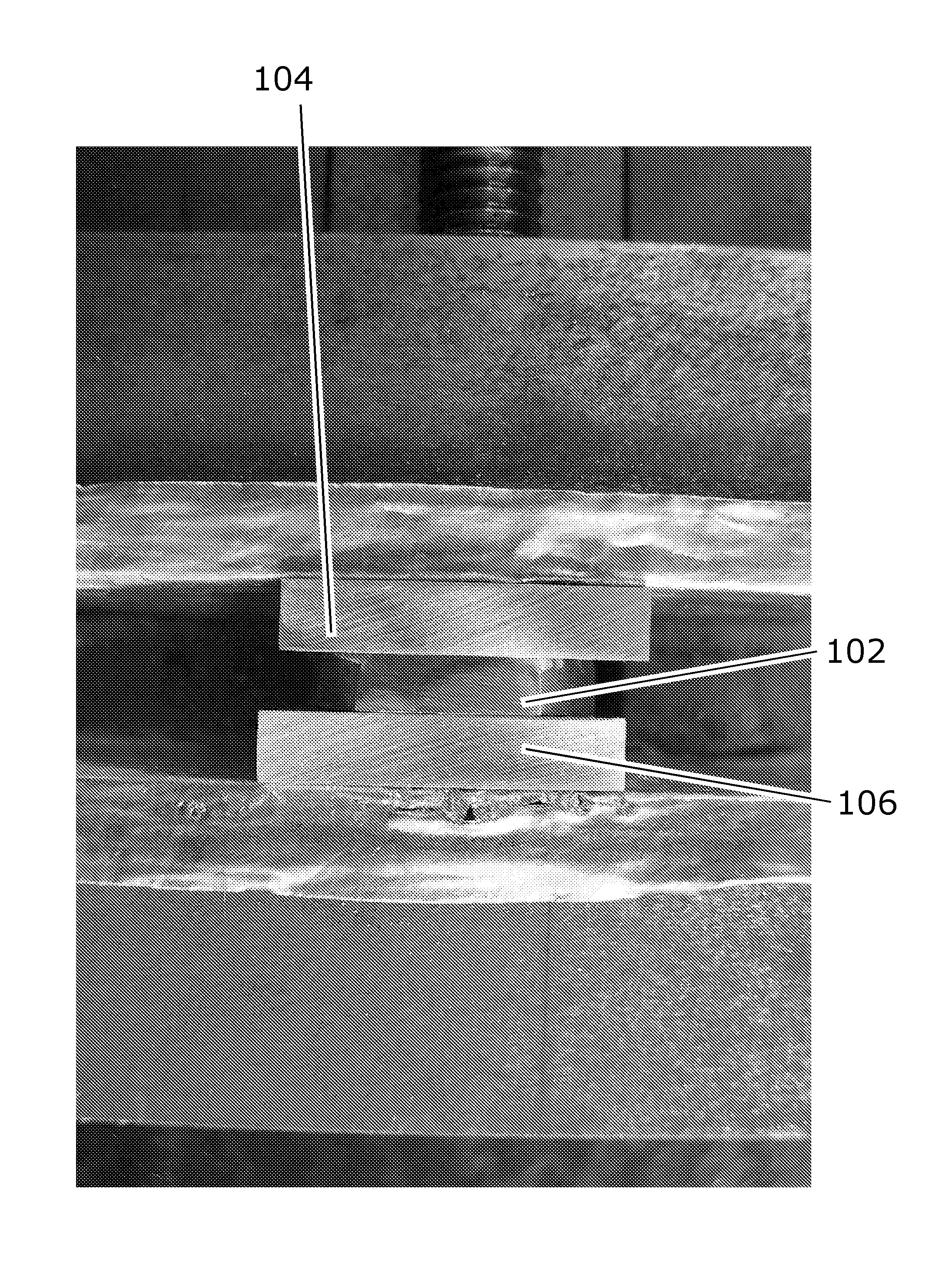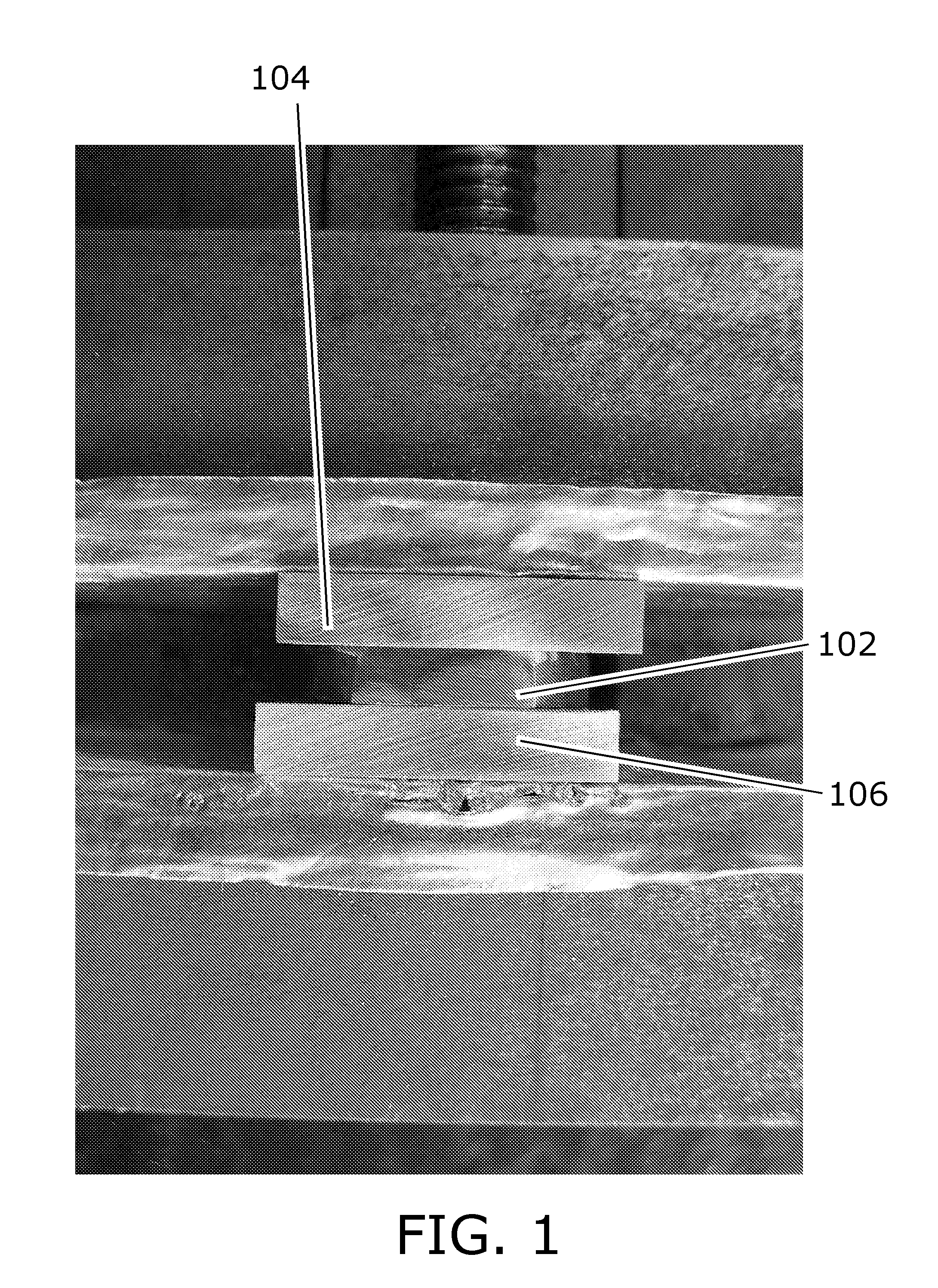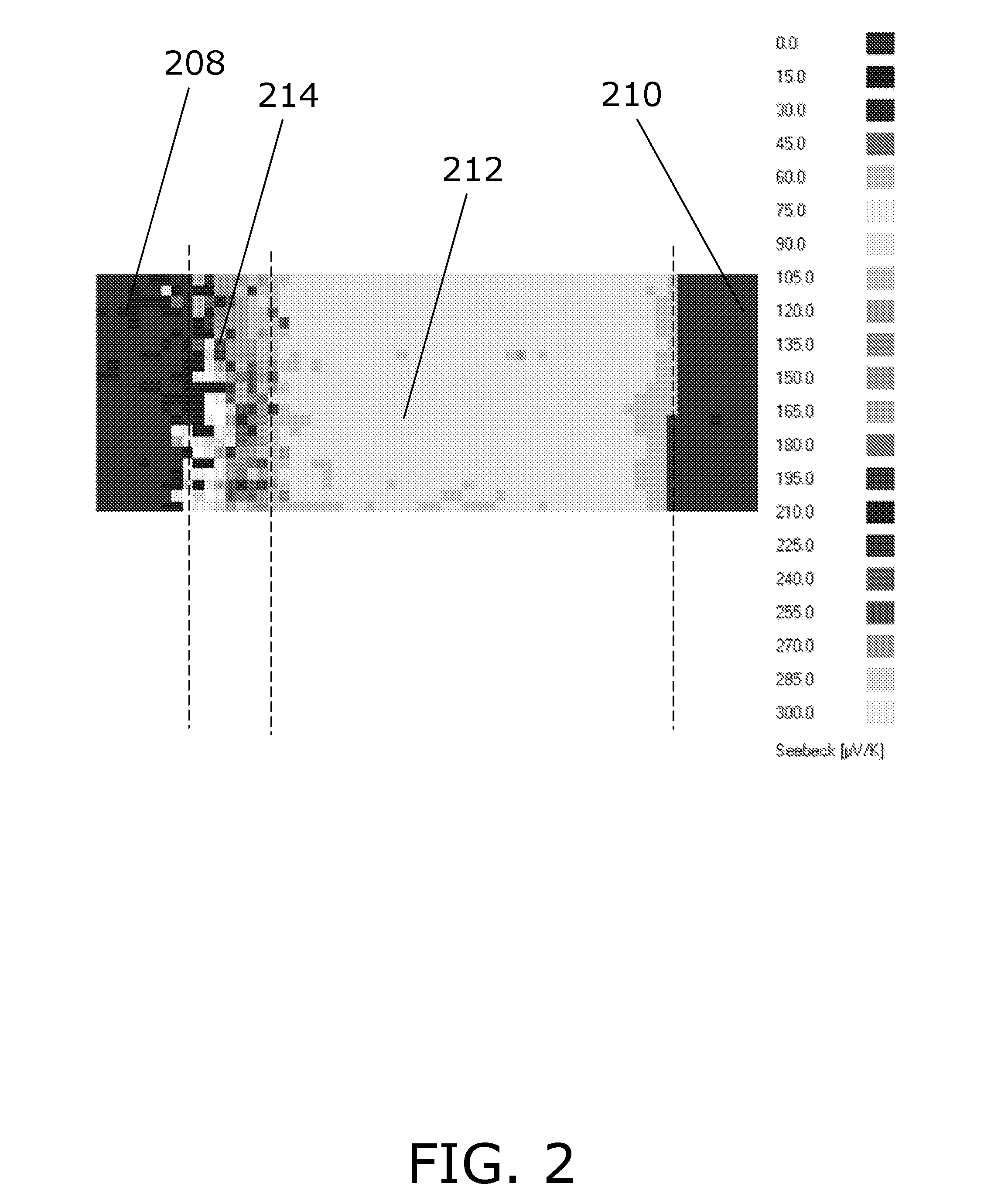Method for producing a thermoelectric solid element
a solid element and thermoelectric technology, applied in the direction of thermoelectric device manufacture/treatment, etc., can solve the problems of limited practical use of thermoelectric devices and difficult acquisition of large crack-free bulk materials, so as to reduce time and/or energy consumption, increase time, and increase the effect of tim
- Summary
- Abstract
- Description
- Claims
- Application Information
AI Technical Summary
Benefits of technology
Problems solved by technology
Method used
Image
Examples
Embodiment Construction
[0073]According to a particular embodiment of the invention, the solid element (which may elsewhere in this application be referred to interchangeably as a ‘pellet’ or ‘sample’) may be produced as described in the following. Stoichiometric zinc (Zn) (powder, with a grain size diameter <45 micron (μm), pro analysis, MERCK KGaA) and antimony (Sb) (powder, grain size diameter <150 micron (μm), 99.5%, SIGMA-ALDRICH CHEMIE GmbH) are weighed with the Zn:Sb ratio of 4:3. The powders are mixed in a ball mill mixer (SpectroMill, CHEMPLEX INDUSTRIES, INC) for 15 minutes. 2.5 g of the mixed powder is loaded into a container, being a graphite die, with a diameter of 12.7 mm. The step of applying the pressure (which elsewhere in this application may be interchangeably referred to as ‘pressing’) is carried out on a DR. SINTER LAB (SPS-5155, SPS SYNTEX). The DC pulse generator is a peak number control system, which tunes the direct current “on time” within the range of 1˜99 digit (3.3 ms-326.7 ms ...
PUM
| Property | Measurement | Unit |
|---|---|---|
| time | aaaaa | aaaaa |
| time | aaaaa | aaaaa |
| diameter | aaaaa | aaaaa |
Abstract
Description
Claims
Application Information
 Login to View More
Login to View More - R&D
- Intellectual Property
- Life Sciences
- Materials
- Tech Scout
- Unparalleled Data Quality
- Higher Quality Content
- 60% Fewer Hallucinations
Browse by: Latest US Patents, China's latest patents, Technical Efficacy Thesaurus, Application Domain, Technology Topic, Popular Technical Reports.
© 2025 PatSnap. All rights reserved.Legal|Privacy policy|Modern Slavery Act Transparency Statement|Sitemap|About US| Contact US: help@patsnap.com



